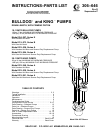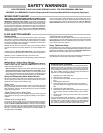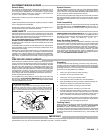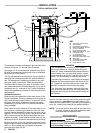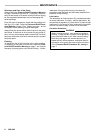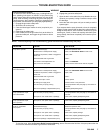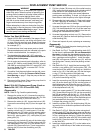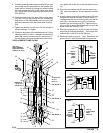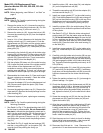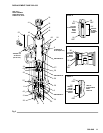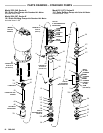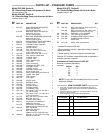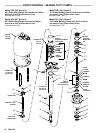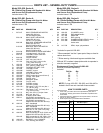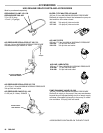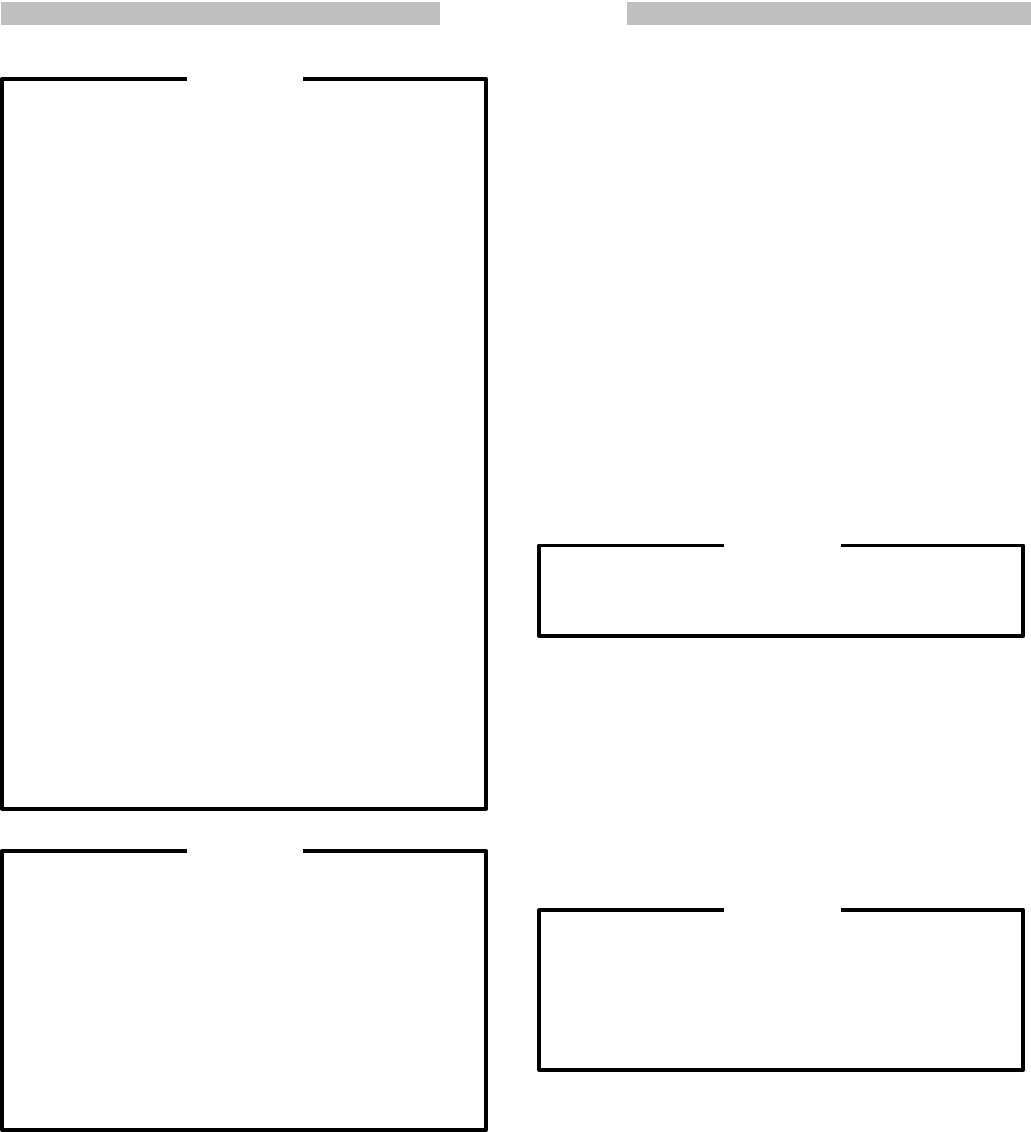
5
306–646
OPERATION
WARNING
Pressure Relief Procedure
To
reduce the risk of serious bodily injury
, including
fluid
injection, splashing in the eyes or on the skin,
or injury from moving parts, always follow this pro
-
cedure whenever you shut of f the pump, when
checking or servicing any part of the spray/dis-
pensing system, when installing, cleaning or
changing spray tips/nozzles, and whenever you
stop
spraying/dispensing.
1.
Engage the gun/valve safety latch.
2.
Shut of
f the air to the pump.
3. Close the bleed–type master air valve (re-
quired
in your system).
4.
Disengage the gun/valve safety latch.
5. Hold
a metal part of the gun/valve
firmly to the
side of a grounded metal pail, and trigger the
gun/valve
to relieve pressure.
6.
Engage the gun/valve safety latch.
7. Open
the drain valve and/or the pump bleeder
valve (required in your system), having a con-
tainer
ready to catch the drainage.
8. Leave
the drain valve open until you are ready
to
dispense again.
If you suspect that the spray tip/nozzle or hose is
completely
clogged, or
that pressure has not been
fully relieved after following the steps above,
VERY
SLOWL
Y loosen
the tip guard retaining nut,
nozzle
or hose end coupling and relieve pressure
gradually, then loosen completely. Now clear the
tip/nozzle
or hose.
Moving
parts can pinch or amputate your fingers or
other body parts. When the pump is operating, the
priming
piston (located at the pump intake) and the
air
motor piston (located behind the air motor
shield)
move. Therefore, NEVER operate the pump with
the
air motor shield removed, and keep your fingers
and
hands away from the priming piston.
Before attempting to clear an obstruction from the
priming
piston or service the pump, follow the
Pres
-
sure
Relief Procedure W
arning
above to prevent
the pump from starting accidentally
.
WARNING
Flush the Pump Before Using
This pump was tested with lightweight motor oil which
was
left in to protect the pump parts.
T
o prevent contami
-
nation of the fluid being pumped, flush the pump with a
compatible solvent before using it. If the pump is being
used
to supply a circulating
system, allow the solvent to
circulate
until
the pump and lines are thoroughly flushed.
Keep the packing nut/wet–cup (21) one–half full with
Graco
Throat Seal Liquid (TSL), to help prevent the fluid
being
pumped from drying on the displacement rod and
damaging the packings.
Starting and Adjusting the Pump
1. Make
sure the air regulator
(C), drain valve (H), and
pump
bleeder valve (4) are closed.
2.
Open the bleed–type master air valve (D).
3.
Hold a metal part of the gun/valve firmly to the side of
a
grounded metal pail, and trigger the gun/valve.
4. Slowly
open the air regulator
(C) until the pump starts
running
slowly and smoothly (about 20 psi [1.4 bar]).
Cycle
the pump slowly until all the air is purged from
the
pump and lines.
5. If
the pump is not
priming properly
, open the bleeder
valve
(4) slightly
. Do not open it all the way; the han
-
dle can come
of
f. Cover the bleeder valve hole with
something other than your hand or fingers and
use
it as a priming valve until the fluid appears at the
bleeder
hole. Close the bleeder valve.
To reduce the risk of fluid injection, DO NOT use
your
hand or fingers to cover the bleeder hole when
priming
the pump.
WARNING
6. Release
the trigger and
engage the safety latch. The
pump
will stall against pressure.
7. In
a direct supply system, the pump will start and stop
as
the gun/valve is opened
and closed. In a circulat
-
ing system, it will run continuously and speed up or
slow
down as the system demands. Always use the
lowest
pressure necessary to obtain the desired re
-
sults.
To
reduce the risk of serious bodily injury
, including
fluid injection and splashing in the eyes or on the
skin,
and property damage, never
exceed the maxi
-
mum air and fluid working pressure of the lowest
rated
component in your system.
See EQUIPMENT
MISUSE
HAZARD, System Pressure,
on page 3.
WARNING
Never allow the pump to run dry of the fluid being
pumped. A dry pump will quickly accelerate to a high
speed, possibly damaging itself. If your pump acceler-
ates
quickly
, or is running too fast, stop it immediately and
check the fluid supply. If the supply container is empty
and
air has been
pumped into the lines, prime the pump
and
the lines with fluid, or flush the pump and leave it filled
with
a compatible solvent. Be sure to eliminate all air from
the
fluid system.
NOTE: A pump runaway valve (F) can be installed on
the
air line to automatically shut of
f the pump if it
starts
to run too fast.



